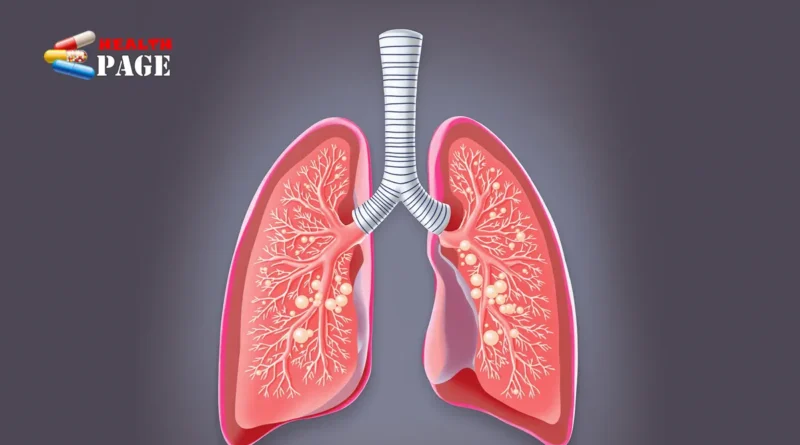Top 7 Alarming Facts About Pulmonary Edema ICD 10 You Need to Know
Pulmonary edema strikes fear into the hearts of medical professionals – and with good reason. This potentially life-threatening condition occurs when fluid accumulates in the air sacs of your lungs, making it difficult to breathe. The proper identification and coding of pulmonary edema through ICD-10 isn’t just a matter of paperwork – it’s crucial for patient care and healthcare operations.
Why should you care about pulmonary edema ICD-10 codes?
- These codes determine treatment protocols
- They affect insurance reimbursement rates
- They impact healthcare facility funding
- They influence medical research data accuracy
The complexity of pulmonary edema coding can be overwhelming. A single misplaced digit or overlooked detail can lead to serious consequences – from denied claims to compromised patient care statistics.
Did you know that pulmonary edema can have multiple underlying causes, each requiring a different ICD-10 code? From heart-related issues to chemical exposure, the proper classification makes a significant difference in treatment approaches and billing processes.
We’ve uncovered 7 critical facts about pulmonary edema ICD-10 coding that many healthcare professionals overlook. These insights will help you navigate the intricate world of medical coding while ensuring optimal patient care and proper reimbursement.
1. Understanding Pulmonary Edema and Its Types
Pulmonary edema occurs when fluid accumulates in the tiny air sacs (alveoli) within your lungs, creating a serious medical condition that demands immediate attention. This fluid buildup disrupts the normal oxygen exchange process, making it difficult for your lungs to deliver sufficient oxygen to your bloodstream.
Key Characteristics of Pulmonary Edema:
- Shortness of breath
- Difficulty breathing while lying flat
- Wheezing or gurgling breath sounds
- Pink, frothy sputum
- Rapid breathing
- Excessive sweating
Acute vs. Chronic Forms
Acute Pulmonary Edema:
- Develops rapidly within minutes or hours
- Requires emergency medical intervention
- Often accompanied by severe respiratory distress
- Can be life-threatening without immediate treatment
Chronic Pulmonary Edema:
- Develops gradually over time
- Symptoms may be less severe but persistent
- Regular medical management required
- Associated with underlying chronic conditions
Cardiogenic vs. Non-Cardiogenic Causes
Cardiogenic Pulmonary Edema:
- Results from heart problems
- Left ventricle fails to pump efficiently
- Increased pressure in pulmonary blood vessels
- Common in congestive heart failure patients
Non-Cardiogenic Pulmonary Edema:
- Caused by direct lung injury
- Normal heart function
- Triggers include:
- Severe infections
- Toxin exposure
- High-altitude exposure
- Near-drowning incidents
- Severe trauma
The distinction between these types plays a crucial role in determining appropriate treatment strategies and selecting accurate ICD-10 codes for medical documentation. Your healthcare provider will use specific diagnostic tests, including chest X-rays, blood tests, and physical examinations, to identify the exact type and cause of pulmonary edema.
2. The ICD-10 Coding System for Pulmonary Edema
The ICD-10 coding system provides specific codes to classify different types of pulmonary edema based on their underlying causes. Here’s a detailed breakdown of the primary codes:
1. J81.0: Acute Non-Cardiogenic Pulmonary Edema
- Applies to sudden fluid accumulation unrelated to heart conditions
- Used for cases involving:
- Acute lung injury
- Post-traumatic pulmonary edema
- Inflammatory conditions
- Infection-related edema
2. J81.1: Chronic Pulmonary Edema
- Designates long-term fluid accumulation in the lungs
- Appropriate for:
- Persistent fluid retention
- Recurring episodes
- Long-standing pulmonary conditions
3. I50.1: Cardiogenic Pulmonary Edema
- Reserved for cases directly linked to heart disease
- Specifically used when:
- Left ventricular failure is present
- Heart failure causes fluid backup
- Cardiac dysfunction leads to pulmonary congestion
4. J68.1: Chemical-Induced Pulmonary Edema
- Covers cases resulting from exposure to harmful substances
- Includes:
- Industrial chemical exposure
- Toxic gas inhalation
- Chemical warfare agents
- Smoke inhalation injuries
The selection of the correct ICD-10 code depends heavily on identifying the root cause of pulmonary edema. Medical providers must consider:
- Patient history and presentation
- Diagnostic test results
- Imaging findings
- Clinical course
- Response to treatments
Accurate code selection impacts:
- Treatment planning
- Insurance reimbursement
- Healthcare facility statistics
- Research data collection
- Quality metrics reporting
3. Critical Diagnostic Criteria Affecting ICD-10 Classification
Accurate ICD-10 classification relies heavily on specific diagnostic criteria. The distinction between cardiogenic and non-cardiogenic pulmonary edema requires precise diagnostic tests and measurements.
B-type Natriuretic Peptide (BNP) Testing
- Normal BNP: < 100 pg/mL
- Gray zone: 100-400 pg/mL
- Elevated BNP: > 400 pg/mL indicates cardiogenic cause
- Values guide selection between I50.1 and J81.0 codes
Pulmonary Capillary Wedge Pressure (PCWP) Measurements
- PCWP ≤ 18 mmHg suggests non-cardiogenic edema (J81.0)
- PCWP > 18 mmHg indicates cardiogenic edema (I50.1)
- Measurement requires right heart catheterization
- Critical for accurate diagnostic classification
Chest X-ray Pattern Recognition
- Cardiogenic Pattern (I50.1):
- Central distribution
- Butterfly or bat-wing pattern
- Enlarged cardiac silhouette
- Prominent pulmonary vessels
- Non-cardiogenic Pattern (J81.0):
- Peripheral distribution
- Patchy infiltrates
- Normal heart size
- Non-uniform appearance
Additional Diagnostic Considerations
- Echocardiogram results
- Arterial blood gas values
- Clinical presentation timing
- Patient history documentation
These diagnostic criteria directly impact code selection and must be clearly documented in medical records. Healthcare providers use this data to determine the appropriate ICD-10 code, affecting both clinical care pathways and billing processes. The combination of laboratory values, imaging findings, and clinical measurements creates a comprehensive diagnostic picture, essential for proper code assignment.
4. Documentation Best Practices for Accurate Coding
Precise medical documentation serves as the foundation for accurate ICD-10 coding in pulmonary edema cases. Your documentation must include specific details about:
- Disease etiology (underlying cause)
- Acuity status (acute vs. chronic)
- Clinical indicators and test results
- Associated conditions
- Treatment plans
Common Documentation Pitfalls to Avoid:
- Using vague terminology without specifying cardiogenic vs. non-cardiogenic causes
- Missing documentation of diagnostic test results (BNP levels, chest X-rays)
- Incomplete documentation of tobacco exposure status
- Failing to link related conditions in the documentation
- Omitting the timing and progression of symptoms
Healthcare facilities can implement standardized documentation templates to capture essential information. These templates should include dedicated fields for:
- Primary diagnosis
- Contributing factors
- Clinical indicators
- Diagnostic test results
- Treatment responses
- Risk factors
Provider Training Requirements
Your medical staff needs specific training on:
- ICD-10 documentation requirements
- Proper use of documentation templates
- Common coding errors
- Clinical criteria for different types of pulmonary edema
- Documentation timing requirements
Implementing regular documentation audits helps identify gaps in coding practices. These audits should focus on:
- Accuracy of diagnostic statements
- Completeness of clinical information
- Proper use of terminology
- Consistency across different providers
- Compliance with coding guidelines
Electronic Health Record (EHR) systems can incorporate smart templates with built-in prompts for required documentation elements. These systems help reduce coding errors through:
- Automated code suggestions
- Required field completion
- Real-time documentation guidance
- Integrated clinical decision support
- Standardized terminology suggestions
5. Special Considerations: Related Conditions and Exclusions in Coding
The ICD-10 coding system includes specific codes within the J60-J70 range for pulmonary edema caused by external agents. These specialized codes capture distinct scenarios:
- J68.1: Chemical-induced pulmonary edema
- J68.2: Upper respiratory inflammation due to chemicals
- J70.5: Respiratory conditions from radiation
- J70.8: Respiratory conditions from other external agents
- J70.9: Unspecified respiratory conditions from external agents
You’ll need to exclude cases without heart disease from cardiogenic codes to maintain accuracy. Here’s a quick reference guide:
Cases requiring exclusion from cardiogenic codes:
- Trauma-induced pulmonary edema
- High-altitude pulmonary edema
- Neurogenic pulmonary edema
- Drug-induced cases
- Post-transfusion reactions
When multiple conditions exist simultaneously, the coding becomes more complex. You must identify the primary condition and any secondary diagnoses that affect patient care. Consider these scenarios:
Multiple condition coding examples:
- Chemical exposure + underlying COPD
- Smoke inhalation + pre-existing heart disease
- Radiation therapy complications + concurrent infection
The presence of multiple conditions requires careful documentation of:
- Primary cause of pulmonary edema
- Contributing factors
- Temporal relationships between conditions
- Severity of each condition
- Treatment priorities
Documentation requirements for external agents:
- Specific chemical or substance involved
- Duration of exposure
- Acute vs chronic manifestation
- Presence of any permanent damage
- Treatment response
These distinctions help determine the appropriate sequence of codes and ensure proper reimbursement for complex cases. The accuracy of your code selection directly impacts quality metrics and population health data tracking, as emphasized in the CDC’s 2022 ICD-10-CM Official Guidelines for Coding and Reporting. Furthermore, understanding the nuances of these coding systems can significantly improve your coding accuracy and efficiency, which is crucial for maintaining high-quality healthcare standards, as highlighted in this comprehensive resource from NCBI.
6. Tobacco Use and Environmental Exposure Impact on Coding
Tobacco exposure adds complexity to pulmonary edema ICD-10 coding. The relationship between smoking and respiratory conditions requires precise documentation through specific codes that capture both direct and passive exposure.
Environmental Tobacco Smoke Exposure (Z77.22)
- Documents passive smoke exposure in non-smokers
- Applies to patients with second-hand smoke exposure at home or work
- Must be coded separately from the primary pulmonary edema diagnosis
- Helps establish risk factors and potential causative agents
Nicotine Dependence Coding (F17 Series)
- F17.200: Uncomplicated nicotine dependence
- F17.201: Nicotine dependence in remission
- F17.210: Nicotine dependence with withdrawal
- F17.220: Nicotine dependence with respiratory conditions
Documentation Requirements
- Specify current smoking status
- Record pack-years of smoking history
- Note exposure duration for passive smokers
- Include cessation attempts and interventions
The inclusion of tobacco-related codes serves multiple purposes:
- Supports medical necessity for treatments
- Identifies high-risk patients
- Enables accurate population health tracking
- Affects risk adjustment calculations
- Influences reimbursement rates
Coding Tips for Tobacco Exposure
- Use combination codes when appropriate
- Document both acute and chronic effects
- Include exposure patterns and frequency
- Update smoking status at each encounter
Healthcare providers must differentiate between active smokers and those with passive exposure. This distinction affects treatment protocols and insurance coverage determinations. Accurate coding of tobacco exposure ensures proper risk stratification and appropriate resource allocation for patient care.
The presence of tobacco-related codes can trigger additional preventive care measures and influence clinical decision-making pathways. These codes play a crucial role in population health management and quality reporting initiatives.
7. Implications for Medical Billing and Reimbursement with Pulmonary Edema Codes
Accurate ICD-10 coding directly impacts your hospital’s DRG assignments and reimbursement rates for pulmonary edema cases. The selection of specific codes influences payment calculations and can result in significant financial variations.
Key DRG Considerations:
- DRG 189: Pulmonary edema with major complications
- DRG 190: Pulmonary edema with complications
- DRG 191: Pulmonary edema without complications
The difference in reimbursement between these DRG levels can range from $3,000 to $15,000 per case. Miscoding pulmonary edema cases leads to:
- Denied claims
- Payment delays
- Reduced reimbursement rates
- Potential compliance issues
- Administrative burden from resubmissions
Documentation Accuracy Impact:
Incomplete documentation creates a ripple effect throughout the billing process. Missing elements that affect reimbursement include:
- Unclear etiology of pulmonary edema
- Unspecified acuity status
- Lack of supporting diagnostic criteria
- Missing documentation of complications
Provider Query Process:
You’ll need to implement a structured query process when documentation lacks clarity:
- Identify missing elements in the clinical record
- Submit specific queries about etiology or acuity
- Document provider responses within 48 hours
- Update coding based on clarified information
Financial Risk Mitigation:
Healthcare facilities can protect their revenue cycle by:
- Implementing pre-bill audits for pulmonary edema cases
- Creating documentation templates specific to pulmonary edema
- Establishing regular coder-provider communication channels
- Monitoring denial patterns related to pulmonary edema coding
Accurate coding practices paired with thorough documentation safeguard your facility’s financial health while ensuring appropriate patient care classification.
Conclusion
Accurate documentation and coding practices are essential for effective pulmonary edema management. The correct use of ICD-10 codes has a positive impact on the entire healthcare system:
- Improved Patient Care: Precise coding allows healthcare providers to monitor treatment results, recognize trends, and make informed decisions for better patient care strategies.
- Clear Communication: Well-documented cases ensure clear communication between healthcare providers, insurance companies, and others involved in the patient’s care.
- Healthy Revenue Cycles: Healthcare facilities maintain steady income through accurate billing practices and appropriate reimbursement rates.
Healthcare providers can enhance their coding practices by:
- Regularly participating in coding education programs
- Using clinical documentation improvement (CDI) tools
- Implementing systematic quality checks
- Staying updated with ICD-10 coding changes
The complexity of pulmonary edema ICD-10 coding requires continuous learning and adaptation. Your dedication to understanding these coding details directly affects patient outcomes and healthcare facility operations. By keeping thorough documentation and choosing the right codes, you contribute to a more efficient healthcare system.
Remember: Each accurately coded case of pulmonary edema strengthens the foundation of healthcare data analytics and improves our understanding of treatment effectiveness.
FAQs (Frequently Asked Questions)
What is pulmonary edema and why is it clinically significant?
Pulmonary edema is the accumulation of fluid in the lung alveoli, which impairs oxygen exchange and can lead to serious respiratory issues. Understanding its types and causes is crucial for accurate diagnosis and effective treatment.
How does the ICD-10 coding system classify pulmonary edema?
The ICD-10 system uses specific codes such as J81.0 for acute non-cardiogenic pulmonary edema, J81.1 for chronic pulmonary edema, I50.1 for cardiogenic pulmonary edema associated with heart disease, and J68.1 for chemical-induced pulmonary edema. Selecting the correct code depends on identifying the underlying etiology.
What diagnostic criteria influence the ICD-10 classification of pulmonary edema?
Key diagnostic factors include B-type natriuretic peptide (BNP) levels, pulmonary capillary wedge pressure (PCWP) measurements, and chest X-ray findings that differentiate between cardiogenic and non-cardiogenic pulmonary edema by analyzing fluid distribution patterns.
Why is detailed medical documentation important for accurate pulmonary edema coding?
Accurate documentation specifying the cause and acuity of pulmonary edema ensures proper ICD-10 coding, preventing misclassification. Utilizing documentation templates and ongoing provider education enhances coding accuracy and compliance.
How do tobacco use and environmental exposures affect pulmonary edema ICD-10 coding?
Exposure to environmental tobacco smoke requires additional coding considerations such as Z77.22 for exposure and F17 series for nicotine dependence. Differentiating between active nicotine use and passive exposure is essential for comprehensive patient records and appropriate reimbursement.
What are the implications of accurate pulmonary edema ICD-10 coding on medical billing and reimbursement?
Precise coding influences Diagnosis Related Group (DRG) assignments which directly affect hospital reimbursement rates. Misclassification or incomplete documentation can lead to financial losses, highlighting the importance of querying providers when etiology or acuity is unclear.


